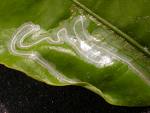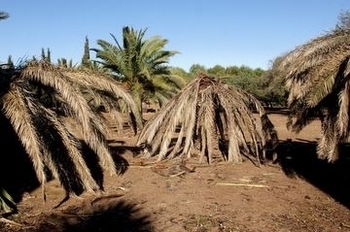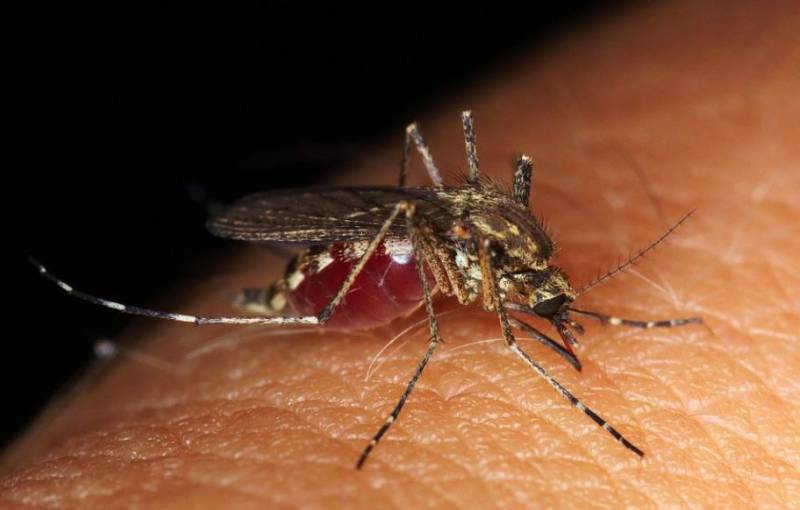
To be listed on the CAMPOSOL TODAY MAP please call +34 968 018 268.
Leaf miners
Costa Cálida gardening, damage to citrus leaves
Leafminers attack many other plants, but here in Spain, citrus are their favourite snack, and the damage caused by their burrowing larvae can devastate new growth, leaving the tree looking very untidy, although the damage caused is mainly superficial.
Grapefruit and lemons are the preferred choice, particularly the young, emerging growth and leaf tips, and occasionally on the rind of young fruit, the older, more mature leaves being ignored.

The adult citrus leafminer is a tiny moth about one-twelfth of an inch long. It has silvery and white forewings with brown and white markings and a distinct black spot on each wing tip..
The moth is most active from dusk till dawn and rests on the undersides of leaves during the day. The female moth lays eggs singly on new shoots and on leaves less than a half-inch in length. The most preferred egg-laying site is along the mid vein on newly emerged leaves.
The larvae, a tiny caterpillar, hatches and begins feeding immediately in nearly invisible mines under the leafs cuticle. As the larvae grows, its zigzagging path of parallel mines make it easily identifiable.

When the larvae matures it moves to the leaf edge where it creates a silken cocoon. As the silk dries the leaf curls over the pupal cell. The larvae pupates within the mine and then emerges as an adult moth.
The pest occurs on host plants throughout the year and has a short life cycle. It can have six to 13 generations annually, depending on temperature and the availability of new growth flushes. That’s a lot of leaf damage if left unchecked.
Treatments and Prevention.
Leaf miners are difficult to control since they spend most of their life inside the leaf, protected by the leaf. Picking off the infected leaves before the moth itself emerges and perpetuates the cycle is the most ecological control, but sometimes this could mean picking off practically all the leaves.
Chemical sprays are available, but should be used with care as they can damage the plants almost as much as the moths themselves, and repeated treatments are needed; these should be sprayed if possible before the larvae enter the leaf surface.
if in doubt, take along a sample of the problem in a bag to the garden centre or agricultural supplier to ensure you purchase the correct spray, as a systemic ( absorbed through the leaves)treatment is really the only effective remedy for these burrowing pests.
Organic treatments include Neem, which can be purchased in”green shops” or herbolarias here, or from the internet, or try using a white oil recipe, which is also a good way to deal with aphids or whitefly.
Mix a starter mix which is half cooking oil , half water, with a tiny bit of washing up liquid. Dilute this mix about 40 to 1 with water and spray, thoroughly coating the leaves. It may be necessary to apply several times, always in the cool of evening and out of direct sunlight.

































